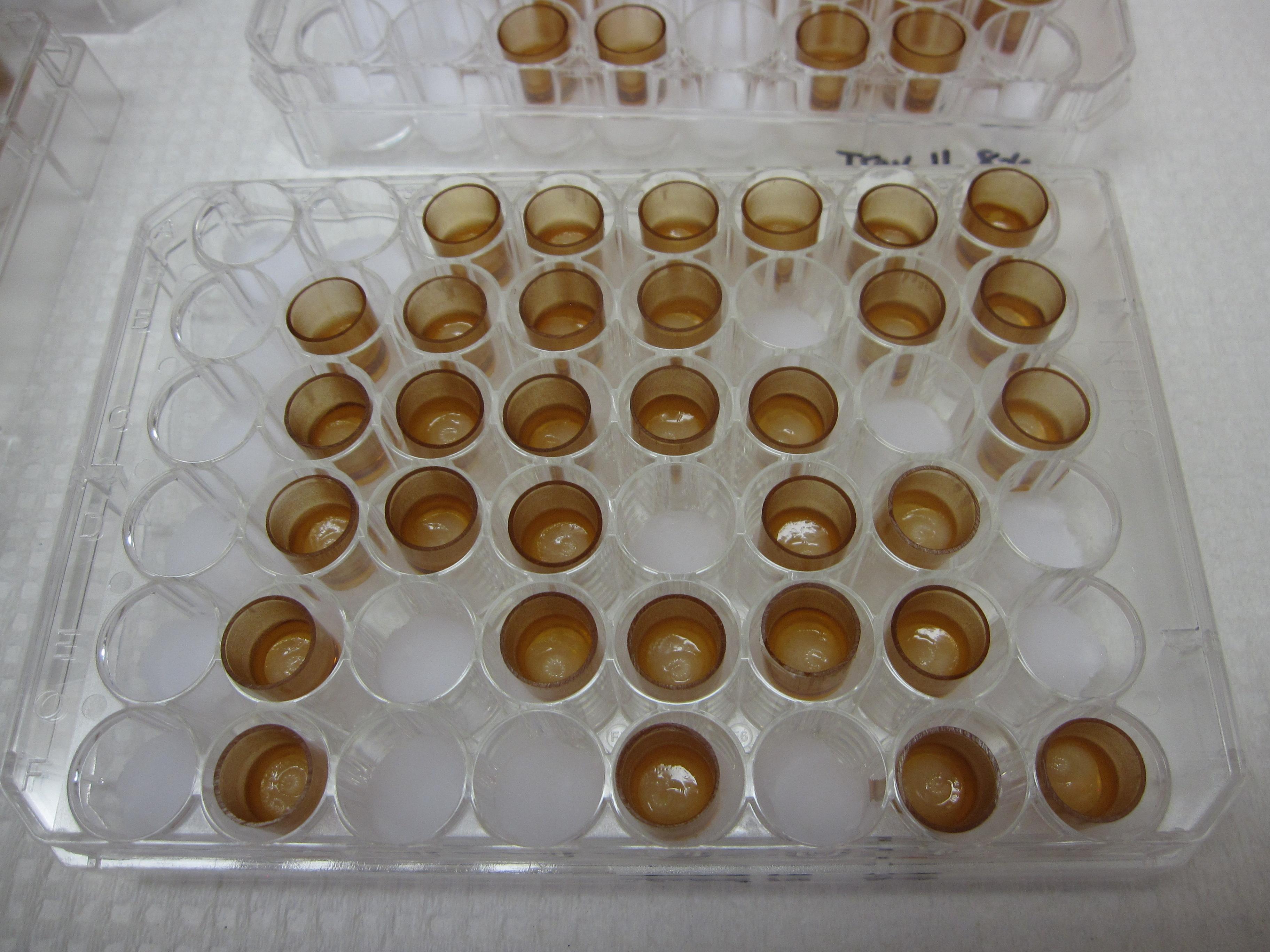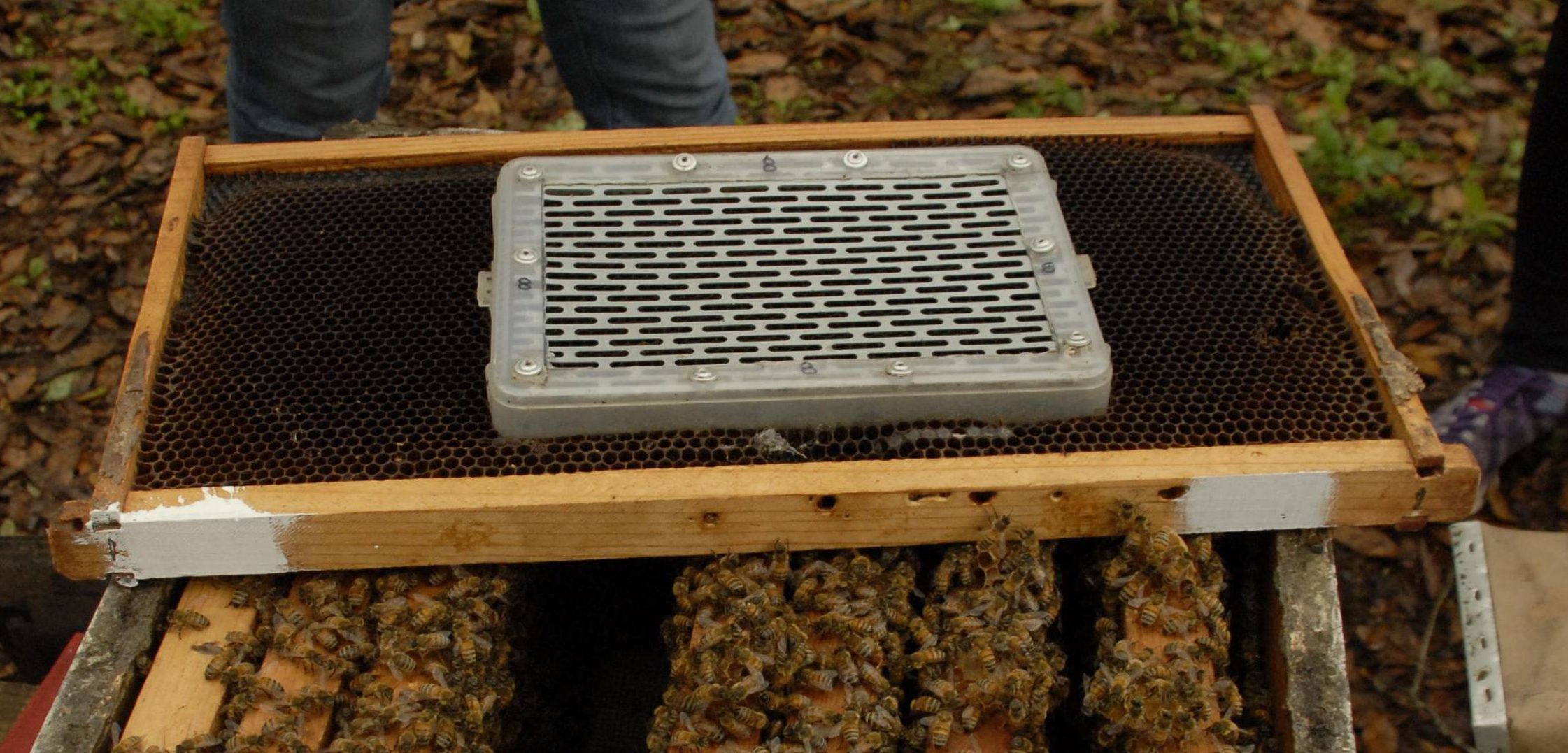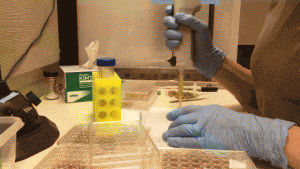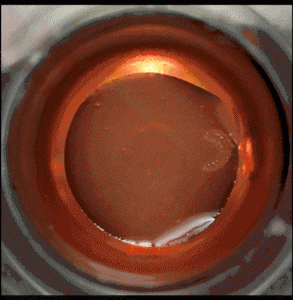In vitro literally means “in glass” in Latin. More broadly in vitro describes a process occuring outside of its biologically normal setting, generally in a laboratory. The idea summons up images of scientists in white lab coats with bubbling beakers and Bunsen burners in the background. The reality is perhaps less fantastical than this, but in actuality is far more interesting. Since the 1980s scientists have been researching how to raise honey bees outside of a hive in a laboratory setting. If we can figure out the exact diet, temperature, and timing requirements of how honey bees workers care for their young sisters, we could ourselves raise bees in a lab, outside of the context of the hive.
But… why?

Right. We get it. Honey bees have been “rearing” themselves for a long time and they seem to have perfected the process. Why mess with it? The answer can be summed up in one word: Research.
As honey bees fall prey to more and more stressors (poor nutrition, pesticides, parasites, etc.) the bee research community is stepping up to find solutions. The trouble is that testing the toxicity of a pesticide, for example, on a somewhat domesticated hive of 30,000 bees can be tricky. There are countless factors at play that could affect the outcome of an experiment –apiary conditions, pest levels between hives, queen health.
The goal of in vitro rearing honey bees is to eliminate as many of these uncontrollable factors as possible. By hand-raising bees from larvae to adult, we can regulate how much food they eat and their exact growing conditions, and ensure that their cells are pest free. In this way researchers are able to detect more accurately the subtle effects that stressors have on honey bee colonies.
The University of Florida Honey Bee Research and Extension Laboratory in collaboration with Universidade Federal de Vicosa in Brazil and Bayer Crop Science recently published research improving upon the in vitro honey bee rearing method. While many improvements to this method have been made over the past few decades, this latest research is the first to accomplish greater than 95% survival of bees from larvae to adult.
Follow along below to see the process in action.

First, find the queen.
The queen is “caged” on a frame of wax comb (Figure 2). The cage acts as a queen excluder, keeping the large queen bee inside while allowing the smaller worker bees to travel in and out, caring for the queen.
The frame with the caged queen is placed back into the colony for a full day. Hopefully in that time your queen has deposited one pearly white egg into the bottom of each cell. Since all the eggs under the cage were laid in the last 24 hours, we are able to begin the in vitro rearing process with brood of approximately the same age. After a few days the eggs will have hatched into larvae.

Now we’re ready to head to the lab!
Next the small c-shaped larvae are moved from their home frame into the clean environment of a research laboratory. The remainder of their development will take place in the plastic cells of a well plate in a temperature and humidity controlled chamber. This moving of larvae from wax cells to plastic ones is called grafting (Figure 3). If you have ever dabbled in honey bee queen rearing, you are probably familiar with the term and the technique; the process of moving larvae into a queen cup is similar to moving them into a well plate.

Over the next six days, the larvae are fed varying diets made up of water, sugar, yeast, and royal jelly. When you are trying to rear a few hundred bees at a time, this can be a lengthy process (Figure 4)!

Once a developing larva has eaten all of its diet, it is moved to a new, clean cell and is given no more food. In a bee hive this would be the time that the brood cell is capped over. A few weeks later, with a little luck and a whole lot of skill, many of the bees will emerge out of their plastic cells as adults.
Keeping bees safe
Currently, regulatory agencies responsible for registering new agricultural chemicals, request that products be tested for the safety of honey bees. This includes not just adult honey bees, but also the effects of these pesticides on immature, developing bees. Prior methods of in vitro rearing honey bees for this purpose simply did not keep enough of the control (untreated) bees alive. The improved methods developed in this new research allow for more thorough testing of the effects of new crop protectants on honey bee brood.
Have something to say? Join the discussion on our Facebook Page.

 0
0
